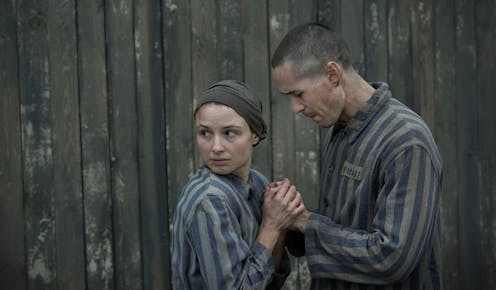The Tattooist of Auschwitz is controversial, but is historical accuracy more important than awareness?
- Written by Jan Lanicek, Associate Professor in Modern European History and Jewish History, UNSW Sydney

This month, the much-anticipated television adaptation of The Tattooist of Auschwitz[1] premiered on Australian streaming platform Stan. Before its release, significant publicity announced it as an all-star production[2]: Melanie Lynsky and Academy Award nominee Harvey Keitel in leading roles; an original score by Academy Award winner Hans Zimmer; an original song written and sung by Barbara Streisand. The series has been applauded[3] as a “courageous, unforgettable, human story” and as both “a love story and reminder of the Holocaust and its horrors”.
The book on which the series is based was published in 2018 by the Australia-based, New Zealand-born author Heather Morris[4]. The Tattooist of Auschwitz[5] has been translated into more than 40 languages and sold millions of copies worldwide. It tells the story of Ludwig “Lali” Sokolov (né Eisenberg), as recounted to Morris over three years of personal meetings.

















